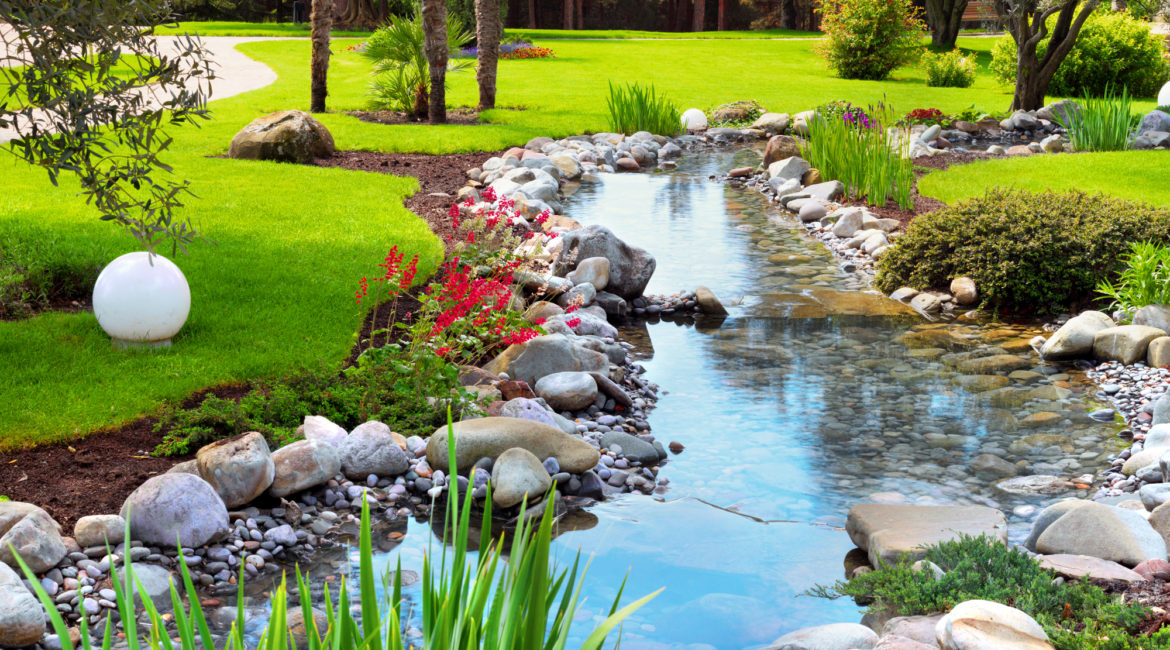Landscaping. It’s one of the most important part of your home’s curb appeal. If you’re like most, you have a great appreciation for landscaping done well. You know…that one house in your neighborhood that looks meticulous…a beautiful lawn, trees, shrubs and flowers that all seem to be at their best all season long. So do these landscape gurus just wing it? Maybe, but when it looks that good, it’s most likely the result of proper planning and execution.
Now if you’re a plant life pro, if you know exactly what you want out of your landscaping, and if you have the time, you can create the perfect yard for you…maybe even winging it. If you’re a novice, though, ramping up is going to take some time. Here are the steps that you can expect in planning your perfect landscape.
 1. Determine Where You Want to Plant
1. Determine Where You Want to Plant
Well before you begin buying flowers, trees and shrubs, you need to determine where you want to plant. A good place to start is by snapping a photo of the area you wish to begin landscaping. Having photo will help with space planning, and can be used later when shopping for your foliage. Take special note of how much sunlight each area gets per day, and the type of soil that is found in those areas. The success of what you plant depends on the right amount of sun and/or shade for the plants you choose.
2. Take Good Measurements
In order to determine how much space you have for what you want to do with your landscaping, take good measurements. Measure the length and depth of the area in which you will be working. If your vision includes new areas, mark off the area with stakes or paint, and measure that area. Measuring will also help determine how much mulch you will need, or if you are adding stones or decor, how large they can be without overwhelming the area.
3. Set Some Goals
Before you can determine what plants to buy, it’s best to set some landscaping goals and priorities. For instance, are you planting for privacy? Are you looking for color throughout the seasons? Want to attract wildlife like birds and butterflies? Do you want to harvest things like flowers, herbs and fruit? Once you set some goals, you’ll be much better equipped to find plants that will meet your long-term wishes.
4. Do Your Plant Research
When developing your list of plants to purchase to meet your goals, begin by doing a little plant research. Take note of which plants return each year (perennials) and which ones you’ll need to replace next season (annuals).
Take note of how large you can expect your plants to get this season and beyond. One of the biggest landscaping mistakes is underestimating the mature size of trees, shrubs and perennials.
If you are choosing plants that bloom, check the life span of the plant’s blooms. Bulbs, for example, are beautiful when they bloom, but most bulbs are one and done. They can provide gorgeous color in early spring and summer, but that color will be short lived.
Check to see which plants will reproduce. Plants like mint, bamboo, and many types of bulbs can multiply rapidly and take over the area. Some plants are considered invasive, and you can have a difficult time keeping them in check or eliminating them later.
Choosing plants that are native to your area is always best. Having palm trees by your pool is awesome, but if you’re in a state that experiences prolonged freezing, they’re not likely to last long.
If you’re a fan of butterflies and birds, research your favorites and see if there are native plants that will attract them. Monarch butterflies love milkweed. Cedar Waxwings love berries. Goldfinches love thistle. Hummingbirds love trumpet vines. Plant it and they will come!
On the flip side of the wildlife coin, consider critter invasion as well. Do you have rabbits, deer and other pests nearby? Boy is it frustrating to have a beautiful flower garden one minute, and nothing but nubs the day after the deer find them! If you’re in an area prone to grazing wildlife, you can find plants that critters will avoid either because of their taste, or toxicity. Marigolds, foxglove, and peony for example are low on the list of critters’ menu. There are gizmos and spray on repellants, but they are certainly not fool proof.
And how about maintenance? Certain plants can withstand dry days, while others will need to be watered frequently during hot, dry days. Are you up for the maintenance?
When you find plants that you like, list out their attributes and match them to your goals to see if they will work in your landscaping.
5. Plan for Proper Planting
If you want healthy plants, research and follow planting instructions. Leaving room for roots to grow by digging the proper size hole and turning the soil to loosen it will allow roots to spread and take hold. Depending on the type of soil around your home, you may need to add quality topsoil, growing agents like MiracleGro, or peat moss to obtain a good nutritional balance in the soil.
6. Invest in Good Garden Tools and Apparel
Landscaping is hard work, and like most home projects, can be made that much harder without the proper tools. Not only should you consider the tools to work the ground, but make sure you’re taken care of, too. Planting is dirty work! The proper gloves, shoes, clothes and good sunscreen is a must!
Now that your planning is done, get to work! If all of this sounds like it will overwhelm your spring or summer, contact a local landscaper like Chesapeake Landscape Group. They can work with you to achieve your long-term landscape goals, and will do all of the time-consuming, dirty work for you so you can relax and enjoy your beautiful yard.




